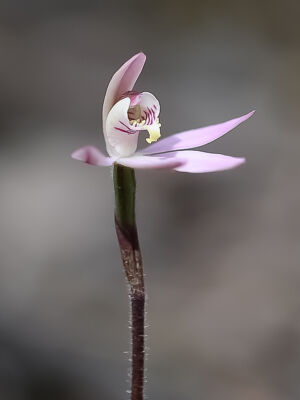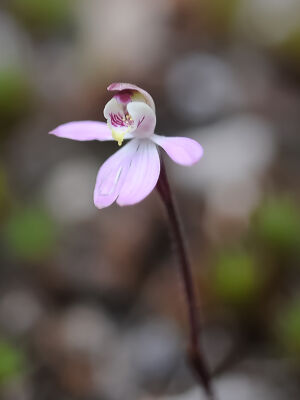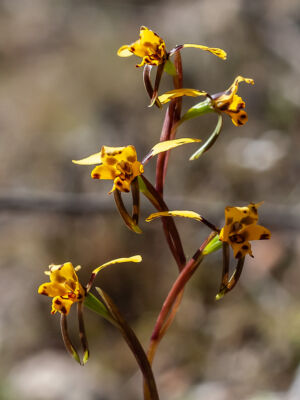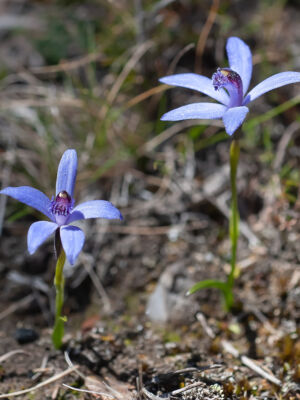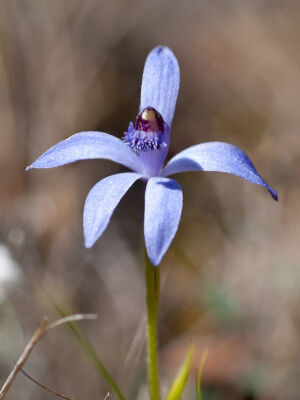Looking back a year ago, the ‘problem’ for orchid enthusiasts was too much wet weather. The sun orchids refused to bloom, there was a lot of rain and grey skies. This Spring the situation is completely reversed. The Eastern Shore of Hobart was dry as dust in September and the Caladenia caudata colony at Waverley Floral Park did not flower at all. The Diuris (pardina or Leopard Orchid) on the Eastern Shore were very shy of flowering and were quite stunted but a few flowers around Pottery Road were more normal though down on previous seasons.
In mid October thankfully the later flowering Diuris sulphurea – Tiger orchid was fairly abundant in some sections of Waverly Floral Park.
The Caladenia clavigera like the caudata were virtually a no-show.
The rain stopped falling in SE Tasmania in early summer and was substantially below usual levels right through winter. I assume this very dry summer and winter are responsible for the marked reductions in flowering for some species. There seem to be much Bandicoot activity around some colonies as well.
All was not gloom and doom, as some species such as the ubiquitous Glosodia major (Waxlips) were often seen albeit still in reduced numbers in some spots. Caladenia carnia, cracens(graceful caladenia) and alata (dark caladenia) were plentiful around areas such as Huon Road, the trails behind the Cascade Brewery, Waterworks and so on.
The Blue Fairies (Pheladenia deforms), Caladenia echidnachila (Fawn spider orchid) and the bearded greenhood, Pterostylis stamina were seen around the end of Pottery Road though populations of the Pheladenia and Fawn Spider seem well down. Thelymitra species – Sun orchids also seem well down in some spots but are currently flowering in reserves around Kingston/Blackmans Bay.
In summary there is still plenty to see around Hobart but numbers of flowering orchids are down overall compared with the last few years.
